Your Reverse Osmosis filter system removes the widest spectrum of impurities better than any other water treatment system, that’s why you chose it. Smart decision, but it also effectively removes the minerals you want to keep. This article shows you how to remineralize reverse osmosis water for taste and health. Overview:
Three easy and cheap ways to Remineralize your Reverse Osmosis, or Distilled Water are: 1). Add a small amount of Himalayan Pink Salt, 2). Add drops of Liquid Trace Minerals, or 3). Add Powdered minerals to your glass or pitcher.

RO is the most capable system in removing contaminants. Because reverse osmosis is so efficient at removing virtually all impurities from water, it’s also very efficient at removing the minerals that may enhance the taste of the water, or even help maintain your health.
Many people believe that tap water, or even spring water is a significant source of the minerals their bodies need, enough to have an effect on their health. However, the minerals that are present in unfiltered water are not abundant enough to make much of a difference in your health.
In fact, if we relied only on our source water to obtain the essential minerals our bodies need, we would quickly become seriously deficient in them.
We get most of the essential minerals our bodies need from the foods we eat, but due to modern factory farming practices depleting soil minerals, food today provides much less essential elements than it did decades ago. Many of us who eat a typical modern, or “western” diet, don’t even get the minerals we need in sufficient amounts in our diets.
Many scientists and nutritionists believe this is one of the major reasons for an explosion of “diseases”.
Now, I’ve always enjoyed the taste of my RO filtered water just as it comes from my tap, but some people swear that reverse osmosis water tastes flat, due to the absence of minerals. People’s stance on the taste of RO water may be based on personal opinion or attitude, but in some cases, it may actually be that some people have a heightened ability to detect slight differences in the flavor of their water better than others.
For those who want the purest water possible, which only a reverse osmosis system can provide, but also want to add minerals back to it, there are inexpensive ways to do it. Let’s take a look at them.
1). Add Minerals with Himalayan Pink Sea Salt
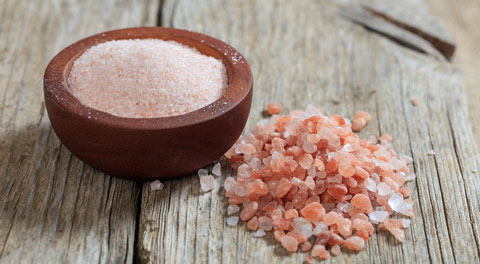
After you draw your water from your filtered water tap, you can add finely-ground, Himalayan sea salt to it. Pink Himalayan Sea Salt is naturally infused with dozens of trace minerals. In small amounts, this can bring back the flavor character of your drinking water that may have been lost in the filtration or distillation process.
Of the 82 or so identified minerals in Pink Himalayan Salt, many are essential for good health, but without the harmful additives that’s often found in regular table salt.
Himalayan pink salt is mined from ancient sea salt deposits located deep in the Himalayan Mountains, using traditional mining methods.
Pink Himalayan salt has been deeply buried in strata that was formed millions of years before modern-day pollution. Pink Himalayan salt contains no micro-plastics or other pollution like modern ocean-harvested salts. It hasn’t been subjected to irradiation, contains no additives or anti-caking agents.
You can easily add ¼ teaspoon of finely-ground Himalayan salt to a pitcher of water, or ½ teaspoon to a gallon and not taste the sodium. If you add much more than that, you’ll likely be able to taste the salt, which depending on your taste, is probably undesirable.
You could experiment with the amount you add until you are comfortable with it. Sodium is an essential nutrient, meaning your body cannot manufacture it, but it is vital for the health of your heart, your muscles and your brain, so it must be taken in from an outside source.
Besides being a vital electrolyte that helps transmit electrical signals through nerves and brain synapses, sodium performs many, many other vital functions in your body.
We need about 3.4 grams (3400 mg) of sodium per day, that’s about 1-1/2 teaspoons of sodium-chloride (salt). You DON’T need to put this much in your water though, as you will get sodium in your diet from many other sources.
Salt (sodium-chloride) is about 40% of sodium and about 60% chloride. These electrically-charged minerals disassociate from each other when diluted in water or ingested.
Everyone knows you loose electrolytes while sweating and during hard physical activity. When you drink large amounts of water, you actually dilute the electrolytes within your body. You release these needed electrolytes when you urinate. If you don’t replenish these electrolytes, you’ll become deficient in them, which can lead to a myriad of health conditions.
Adding minerals back into your water by stirring in Himalayan salt is a good way to improve the taste of your drinking water, as well as add a small amount of minerals.
The most abundant minerals in Himalayan pink salt are:
Chloride: 590.93 g/kg
Sodium: 382.61 g/kg
Sulfur: 12.4 g/kg
Calcium: 4.05 g/kg
Potassium: 3.5 g/kg
Magnesium: 0.16 g/kg
The Importance of Electrolytes
You might be familiar with some of the minerals that are needed by your body, but you may not have known that many are electrolytes.
Electrolytes are electrically-charged minerals that enable electrical impulses that help to regulate the amount of water in your body and cells, and perform nervous system and muscle functions.
Electrolytes also help regulate the electrical impulses for your most important muscle, your heart. Electrolytes help your heart to contract and relax in a normal beat pattern.
Here are some important essential electrolyte minerals:
- Potassium
- Sodium
- Chloride
- Magnesium
- Calcium
- Bicarbonate
- Phosphate
This article is about improving the taste of your mineral-depleted drinking water. By re-adding some of those lost minerals can influence how your water tastes. I want to remind you that we normally do not receive the needed amounts of minerals from our drinking water.
Let’s quickly review the best ways to make sure you’re getting the needed minerals, from your diet.
Get Your Minerals from Food
The amount of minerals in water is just never going to be enough to re-supply the minerals your body needs. You could drink a drum of water everyday and still not get enough minerals. You mostly get those needed minerals from the food you eat, or should be eating.

Here’s a short list of the most needed minerals, which happen to be electrolytes, and the foods that you can get those from:
Potassium – Recommended Daily Intake (RDI) 4700 mg – The most important electrolyte mineral can be obtained from leafy-green vegetables (e.g. spinach, kale, beet tops), winter squash, avocados, baked sweet potato w/skin, baked potato w/skin, white beans, yogurt, halibut fish, cooked broccoli, cantaloupe, bananas, etc.
“Potassium is necessary for the normal functioning of all cells. It regulates the heartbeat, ensures proper function of the muscles and nerves, and is vital for synthesizing protein and metabolizing carbohydrates.” – Harvard Medical School
Magnesium – RDI 300-420 mg – The second most important mineral, magnesium, you can get from many of the same foods as potassium, leafy-greens, beet tops, kale, broccoli, brussel sprouts, avocados, nuts and seeds, squash, etc.
Magnesium helps the function of muscles and nerves, strengthen bones and helps lower blood pressure.
Calcium – RDI 1000 mg – The most abundant electrolyte in the body. Not only does it help with strong bones, but it also helps the nervous system, muscle and heart functions. You can get this from milk and dairy products like yogurt and cheese, eggs, fish like salmon and sardines, asparagus, collard greens, dried apricots, etc.
Sodium – RDI 1360 mg – As another important neurotransmitter, it helps regulate nerve function, fluid balance, and muscle contraction, among many other important functions. You can obtain this from: Salt (sodium-chloride), sodium-bicarbonate (baking soda), olives and pickles in brine, etc.
Chloride – RDI 2040 mg – Is very important in building up your stomach acid (hydrochloric acid) in order to be able to break down food in order to absorb nutrients from it. This is the main reason why a low-salt intake is dangerous to your health. You can get this from Salt (sodium-chloride), olives and pickles in brine, lettuce, celery, tomatoes, etc.
Phosphorus – RDI adults 700 mg, children age 9 to 18, 1250 mg – Has a similar role as calcium in its role in bone building and health, but also helps to prevent cell damage and make repairs. It also plays a role in converting carbohydrates and fats into energy for the body. Great sources for this mineral is from Meat, dairy, beans and nuts.
2). Add Supplemental Trace Minerals to Your Water
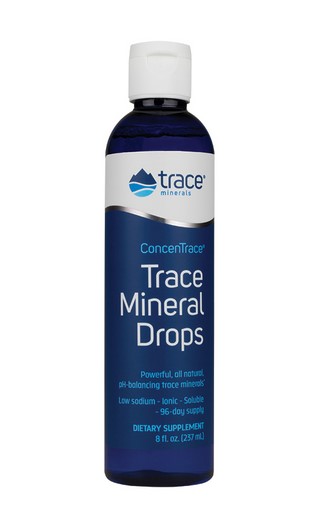
An excellent way to add many of the minerals you need is to add liquid drops of an ionic mineral supplement to your glass or pitcher of water. With the Trace Minerals product, you can avoid adding too much sodium, but still add in some of these essential minerals, mostly to enhance the taste of your water. Don’t add too much.
Some of the main mineral ingredients in this formula, at a serving size of ½ teaspoon (about 40 drops) include:
Magnesium (250 mg);
Chloride (650 mg);
Sodium (5 mg);
Potassium (3 mg);
Sulfate (40 mg);
Lithium (1.5 mg);
Boron (1 mg);
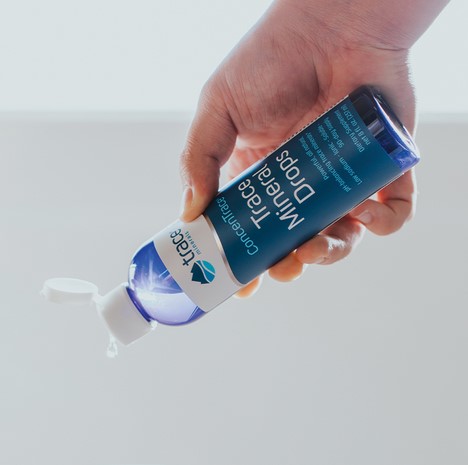
Other minerals in lesser amounts include: calcium, silicon, selenium, phosphorus, iodine, chromium, manganese, iron, copper, molybdenum, zinc, vanadium.
Many people love this product, as they’ve claimed it has greatly improved the taste of their water. Some people have reported that it’s helped to alleviate some serious health conditions too. Others have found it distasteful if used in the concentration as recommended on the bottle.
If you opt to try this, I would suggest you start out by adding just a couple two or three drops to a glass of water, or just a few drops to a pitcher. In this low concentration, you should not taste anything, or at least nothing objectionable. You can then add more drops per volume of water to match your taste and preference.
Trace Minerals is available at Amazon.
3). Powdered Supplements – Quick Minerals for Your Drinks
The company, BulkSupplements.com sells powdered mineral supplements at their website as well as on Amazon.
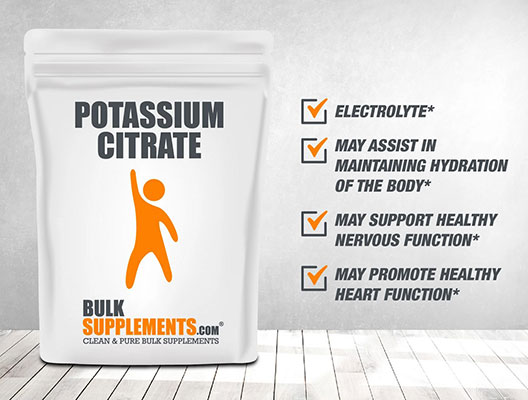
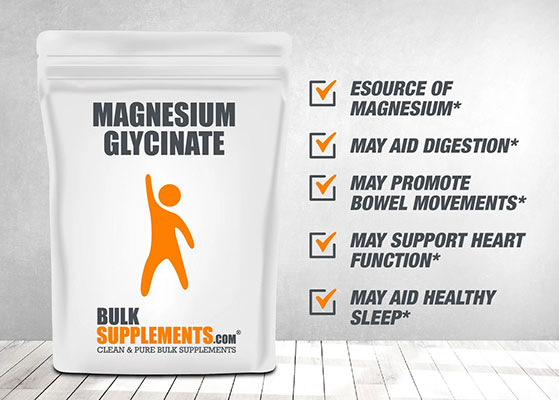
Personally, I like the taste of my reverse osmosis water as is, without any supplementation, but I occasionally add a small amount of Bulk Supplement’s Potassium Citrate to my water, and sometimes Magnesium Glycinate to juicer-type drinks to help me meet the recommended daily intake of these two important minerals.
I’ll mix in small amounts into a pitcher of water and drink from it throughout the day. If I add 1/4 teaspoon of potassium citrate to just 10 ounces of water, I can taste the difference, but it’s not objectionable at all. The difference is not pronounced, but I can say that minerals in water do have somewhat of an effect on the taste of the water.
Now, this is more than the package recommends, they recommend 1/10 of a teaspoon per day as a dosage. It’s been said to be careful not to take too much of a potassium supplement, as high blood potassium can also cause its own set of health issues, as too little of this essential mineral can.
I’ve learned that the Magnesium Glycinate is best mixed in a juice drink other than plain water, because it makes plain water cloudy and chalky with a very faint sweet flavor. It’s not really that objectionable, but when I want just plain water, I don’t really want to taste that.
Potassium and magnesium are two minerals that almost everyone is deficient in and is the most difficult to obtain in sufficient amounts in the diet. I do like these two supplements.
There are many other minerals that are essential for good health that I haven’t mentioned, but the one’s I’ve mentioned are the minerals that can most influence the taste of your water.
